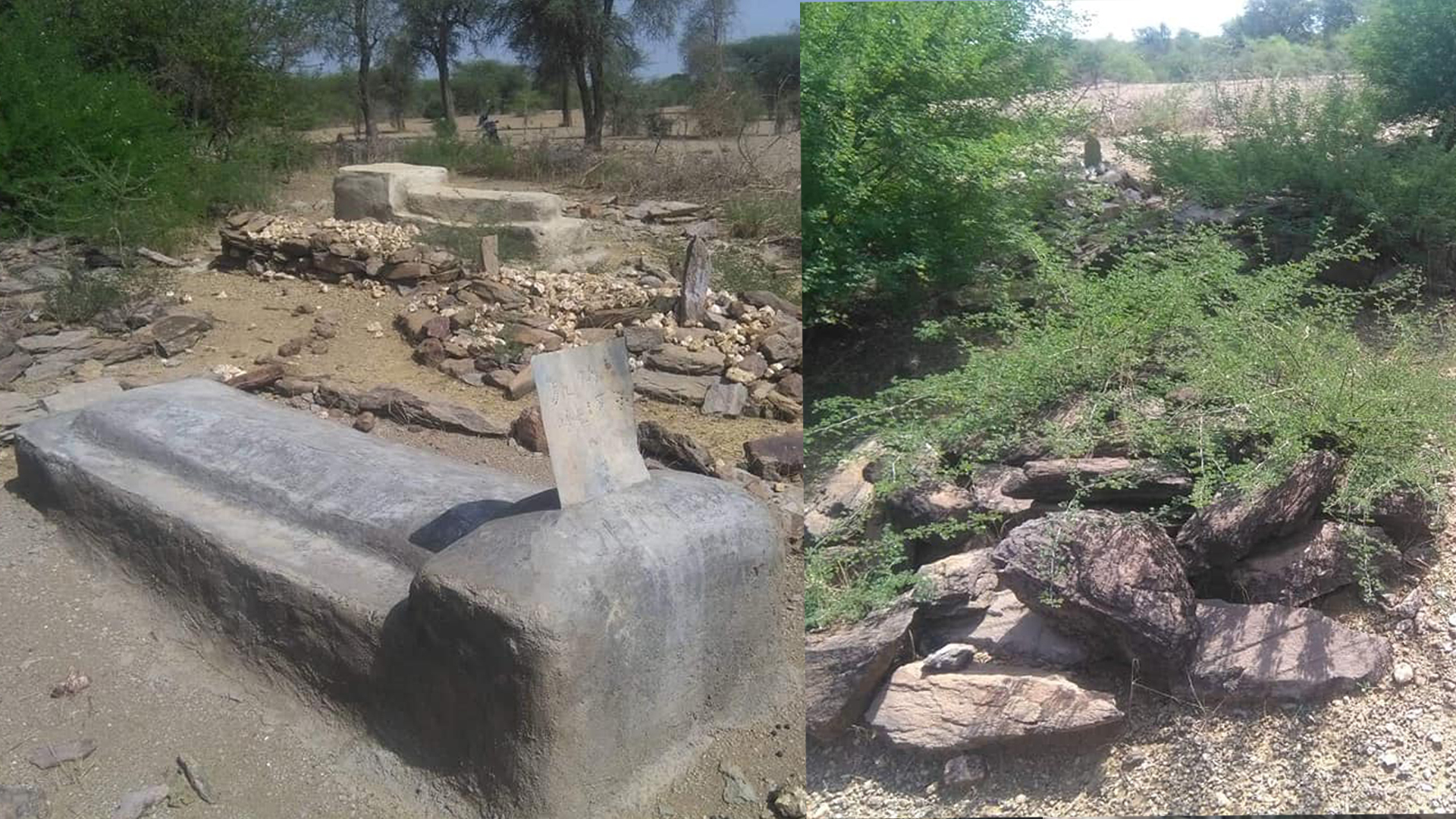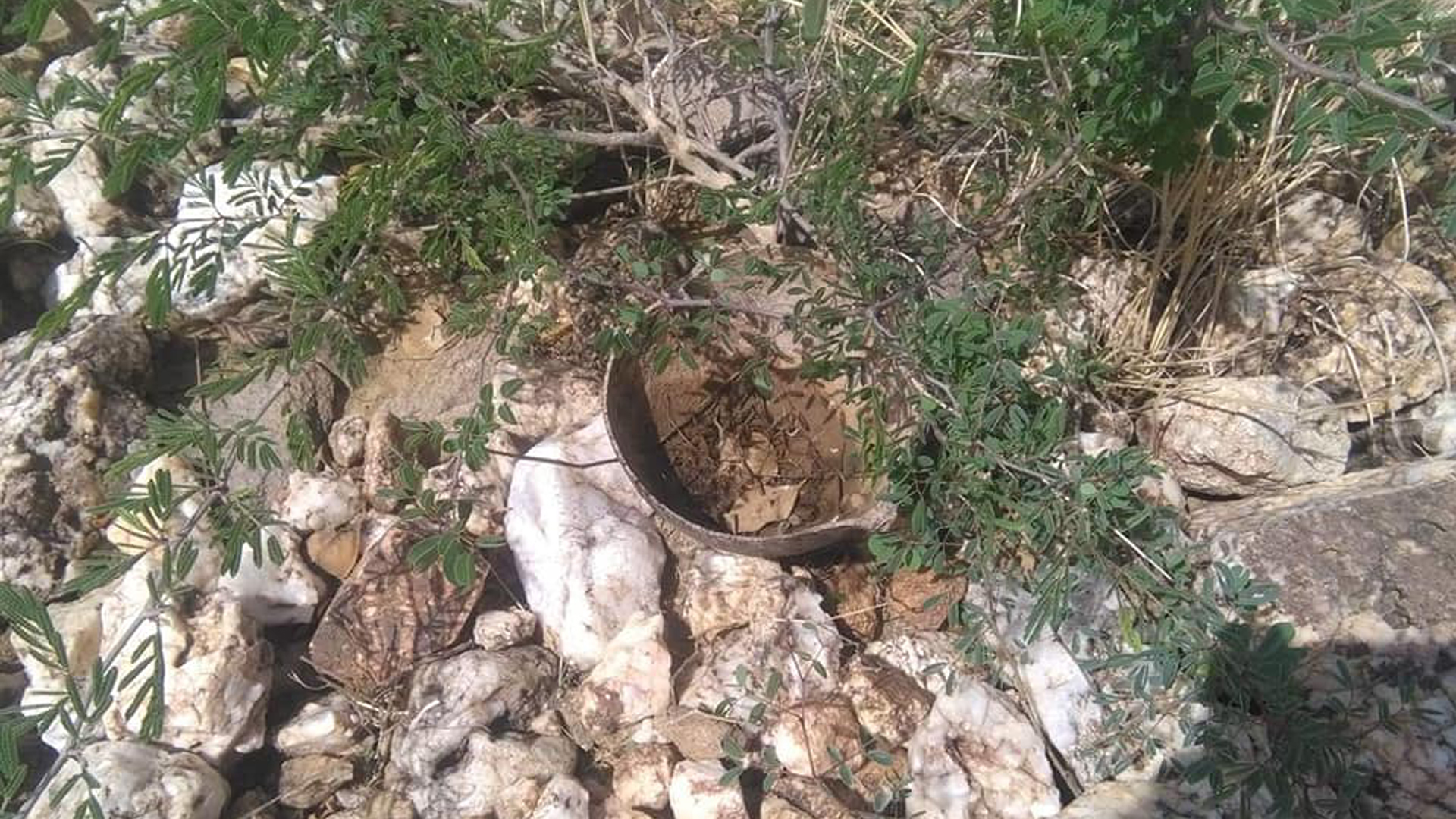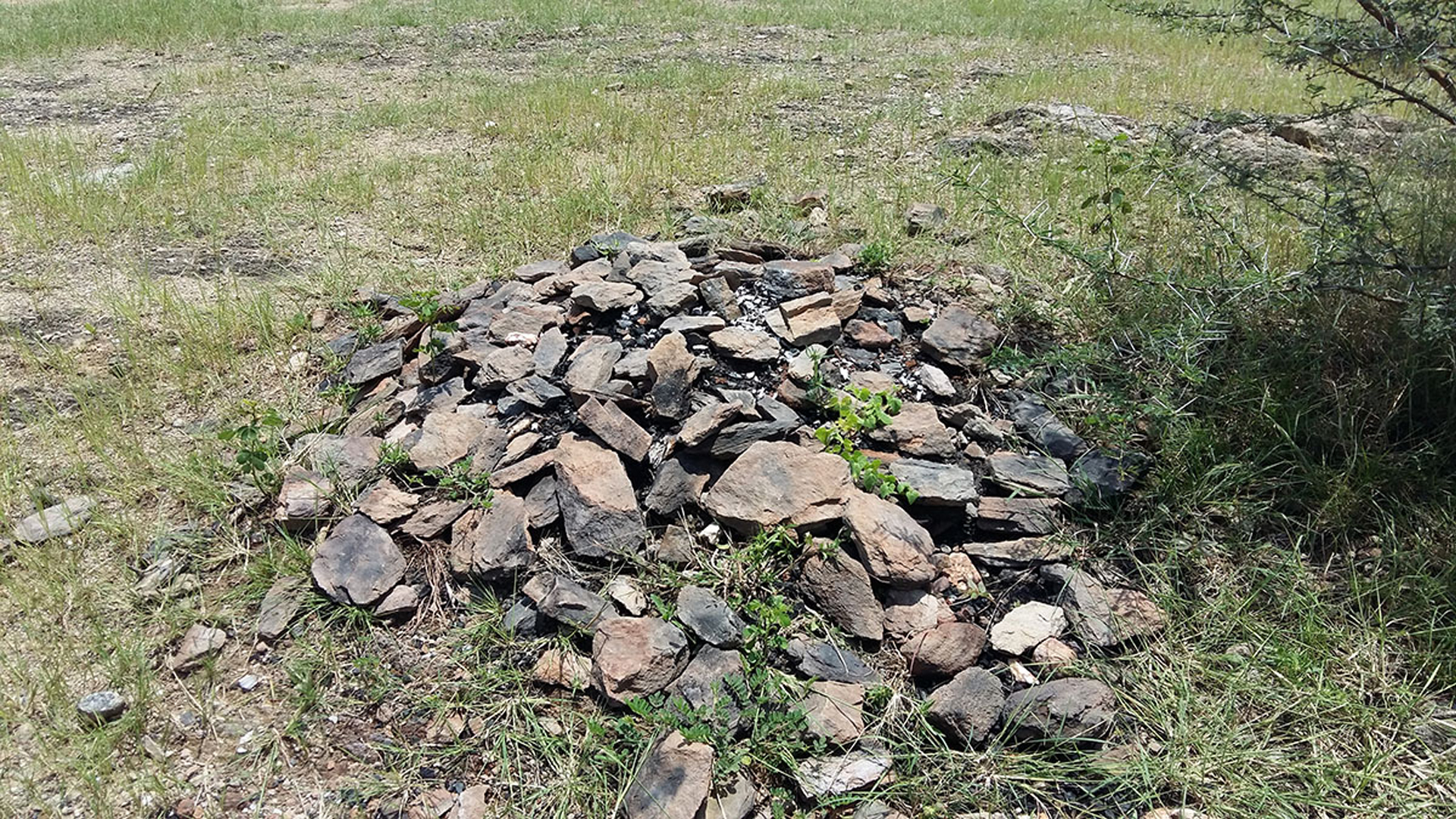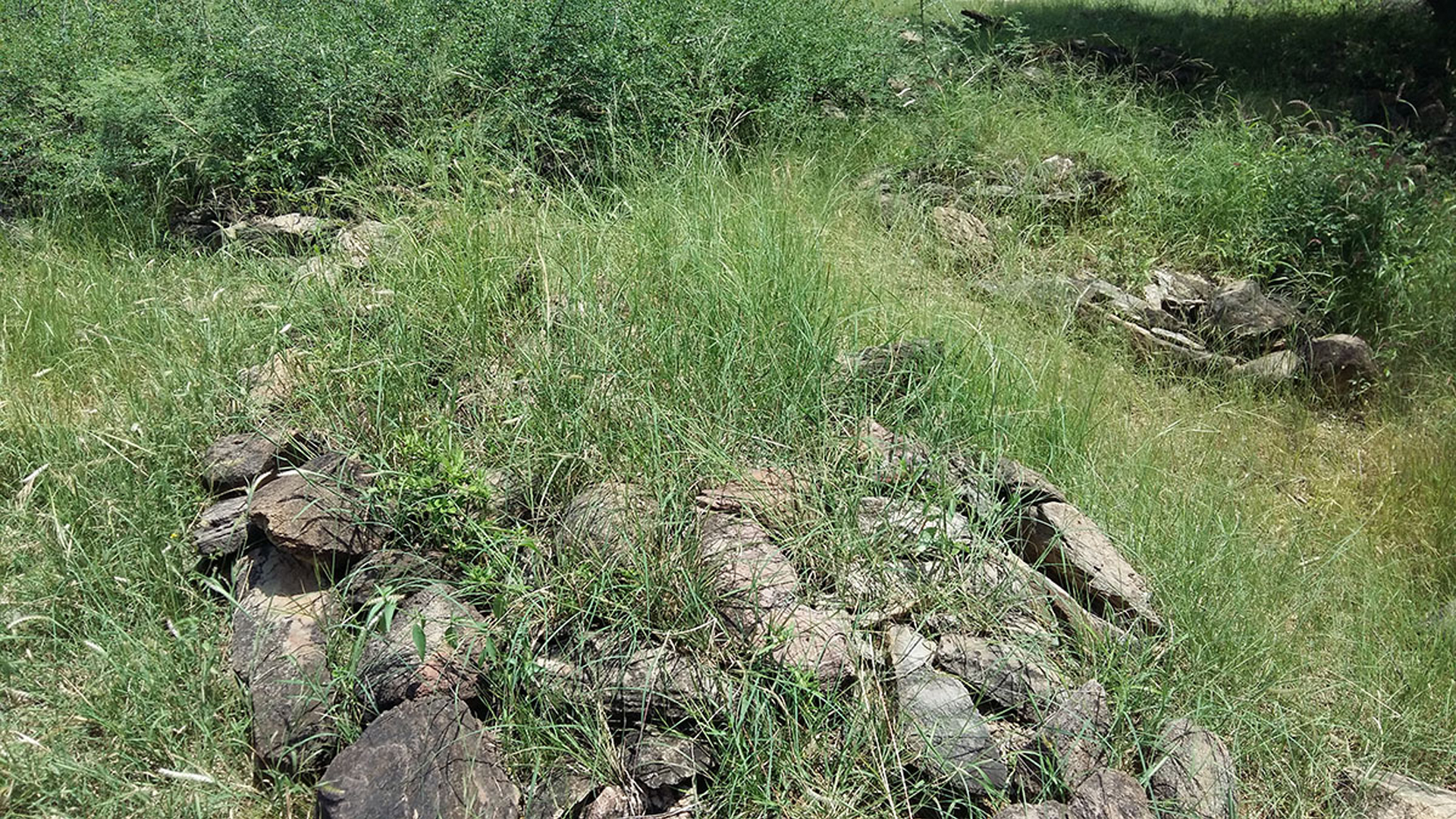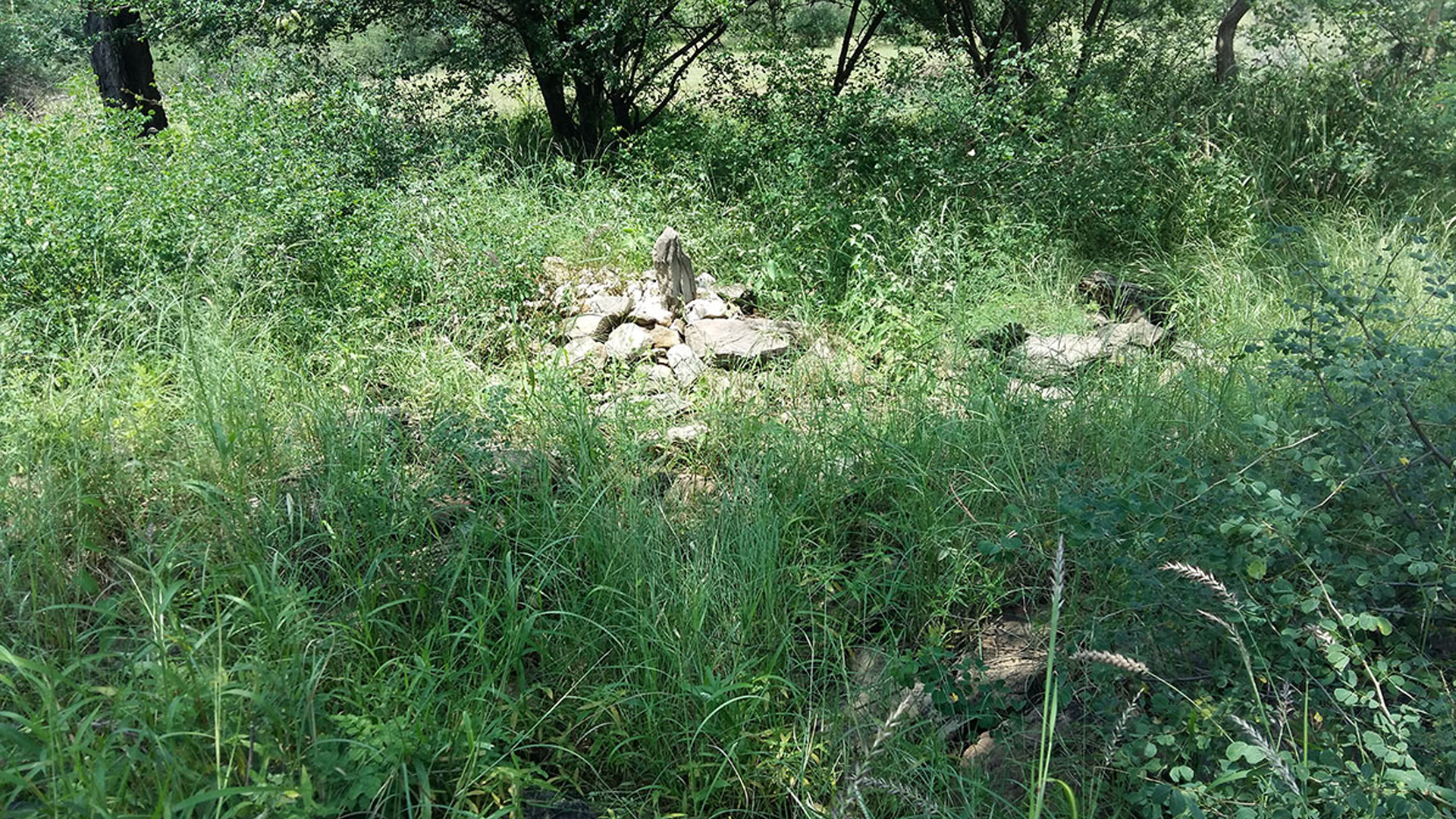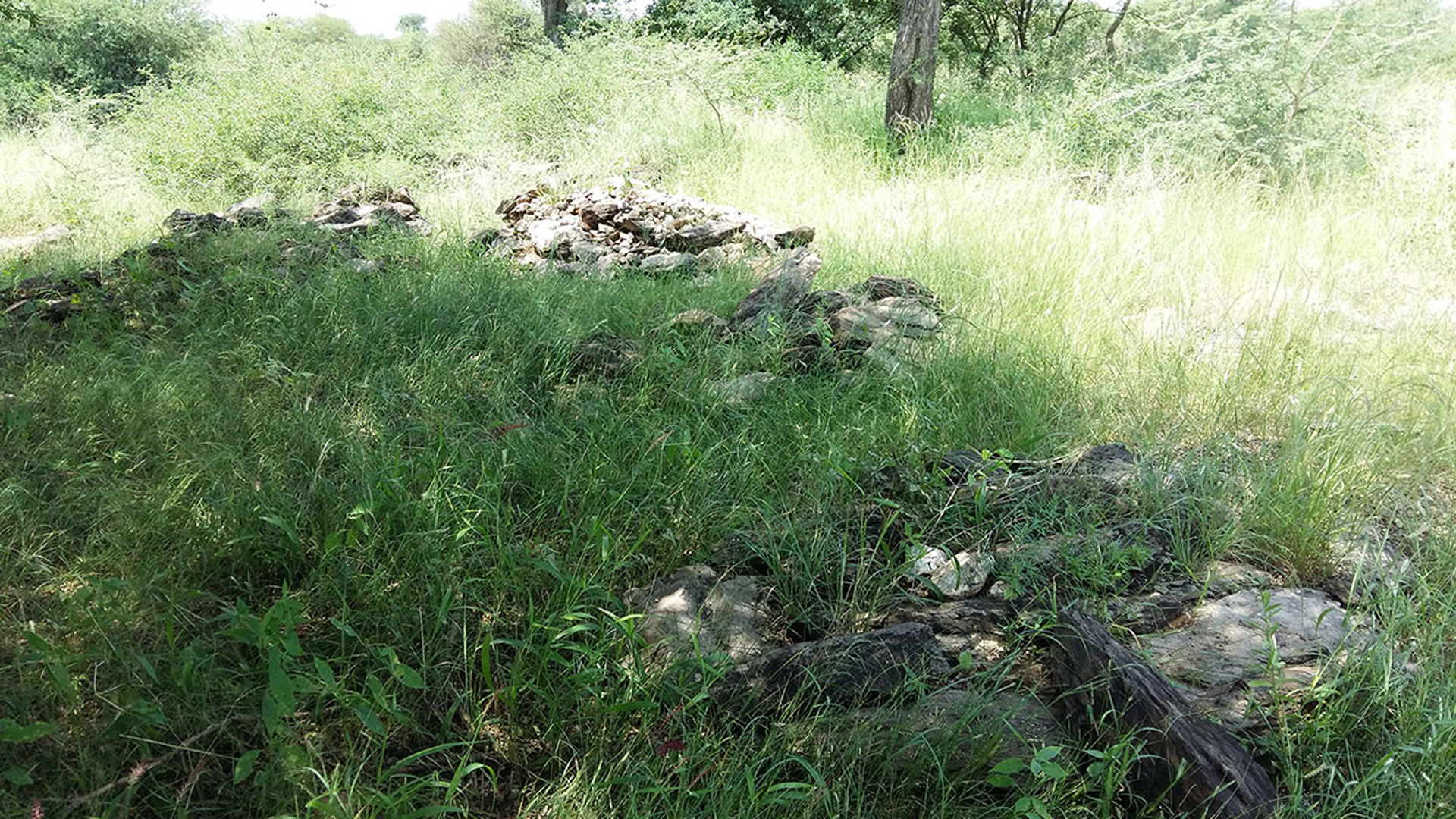The Kunama tribe is one of the rare indigenous habitants of Tigrai. They have their own language, lifestyle, history, culture, and tradition. Although unluckily, their history is not well written, they have a very interesting history and many qualities to show, many stories to tell, and many treasures to share.
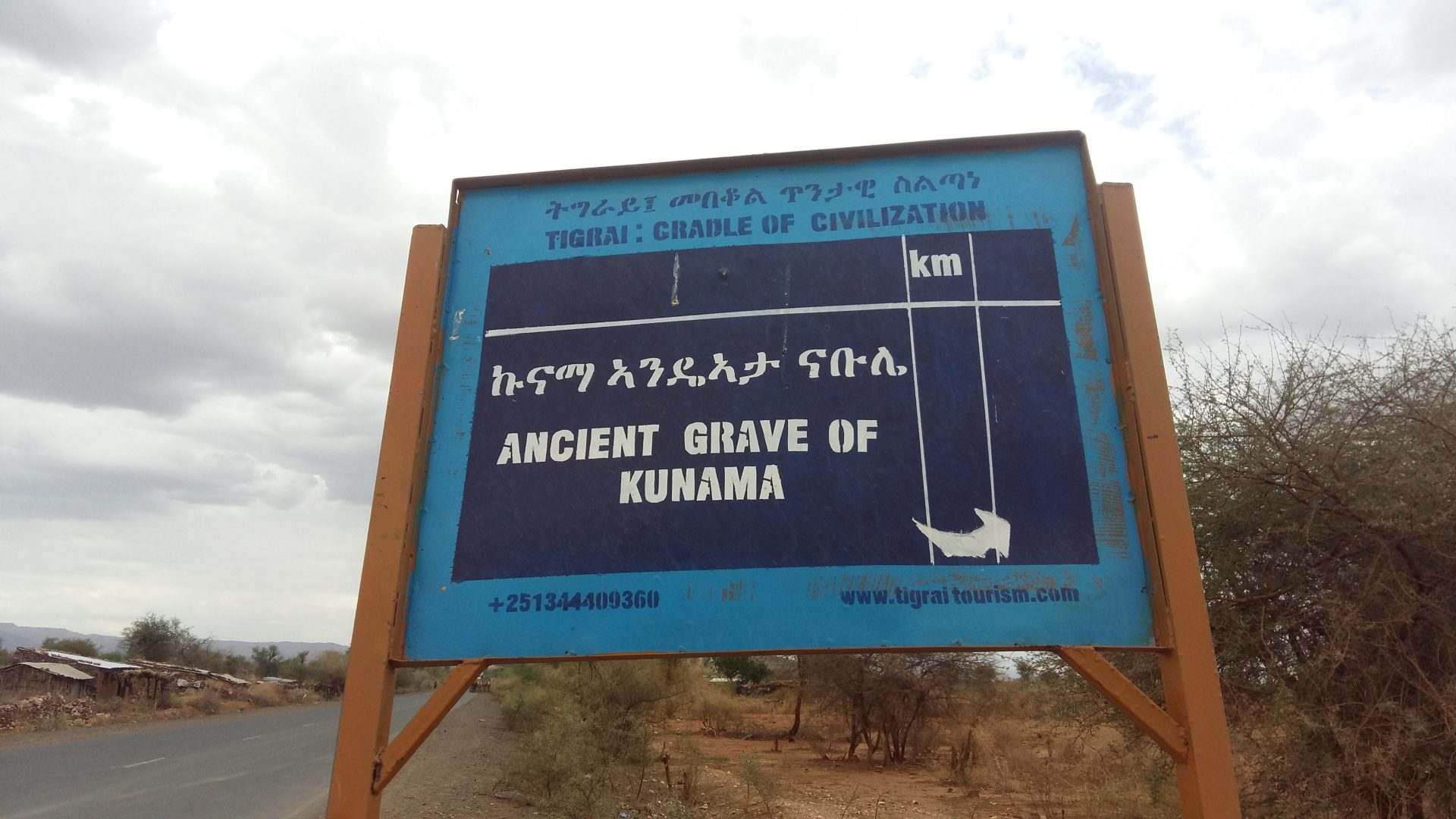
Signpost at Maiani Hospital gate, Sheraro, indicating the Kunama Graveyard.
According to oral accounts, their historic settlement was on both sides of the lower Mereb river. Continuous conflicts with existing and newcomers have resulted in non-stop resettlements until recently. Today, they occupy the lowlands of Adiabo, parts of Qafta, Wolqait, and Gash Barka area, once again on both sides of another river, the Tekeze River.
In their tradition, when a person dies, the Kunamas bury them in a carefully built grave for many reasons. Their first grave remembered to date is located in a remote village of what is known as Biyara today. As their elders say, there are many other historic landmarks in that place.

Under each grave mark are columns of underground graves for several people.
They have been running off human interactions for a long time in history until finally, they came into unavoidable close contact with other Tigrians. In search of a secure environment, they moved to different places and lived scattered from Adiabo to Wolqait, and from Humera to Gash Barka of Eritrea.
The majority of them moved to Sheraro and its surroundings a long time ago. Historically, they claim the names Axum, Shire, and Sheraro were adopted from names of notable Kunama men of the first dwellers in those areas. Shire, from a man known by Shirela, whose three sons have made to other local places names of Danso, Tezu, and Kentibay; Emba Danso, Emba Tezu, and Adi Kentibay respectively.
According to their oral accounts, the Kunama had been entertaining many conflicts. Those bitter battles fought with other tribes and new arrivals have caused the Kunamas to have forced resettlements. They abandoned their villages, and hence their first graveyard, at Biyara and established a new one in the eastern outskirt of Sheraro. Dug deep into the ground, their graves have compartmented rooms.
Every year the Kunama gather in these graveyards, butcher an ox, toast in stones heated by a campfire and make some prayers. They present foods and drinks to ‘spirits’ in the graveyards.
The Kunamas have a dedicated Ethnographic Museum in the town of Sheraro. At #HadgiTourism, we are doing extensive research on the entire history, lifestyle, culture, etc of Kunama. Anyone interested in working with us is warmly welcomed.
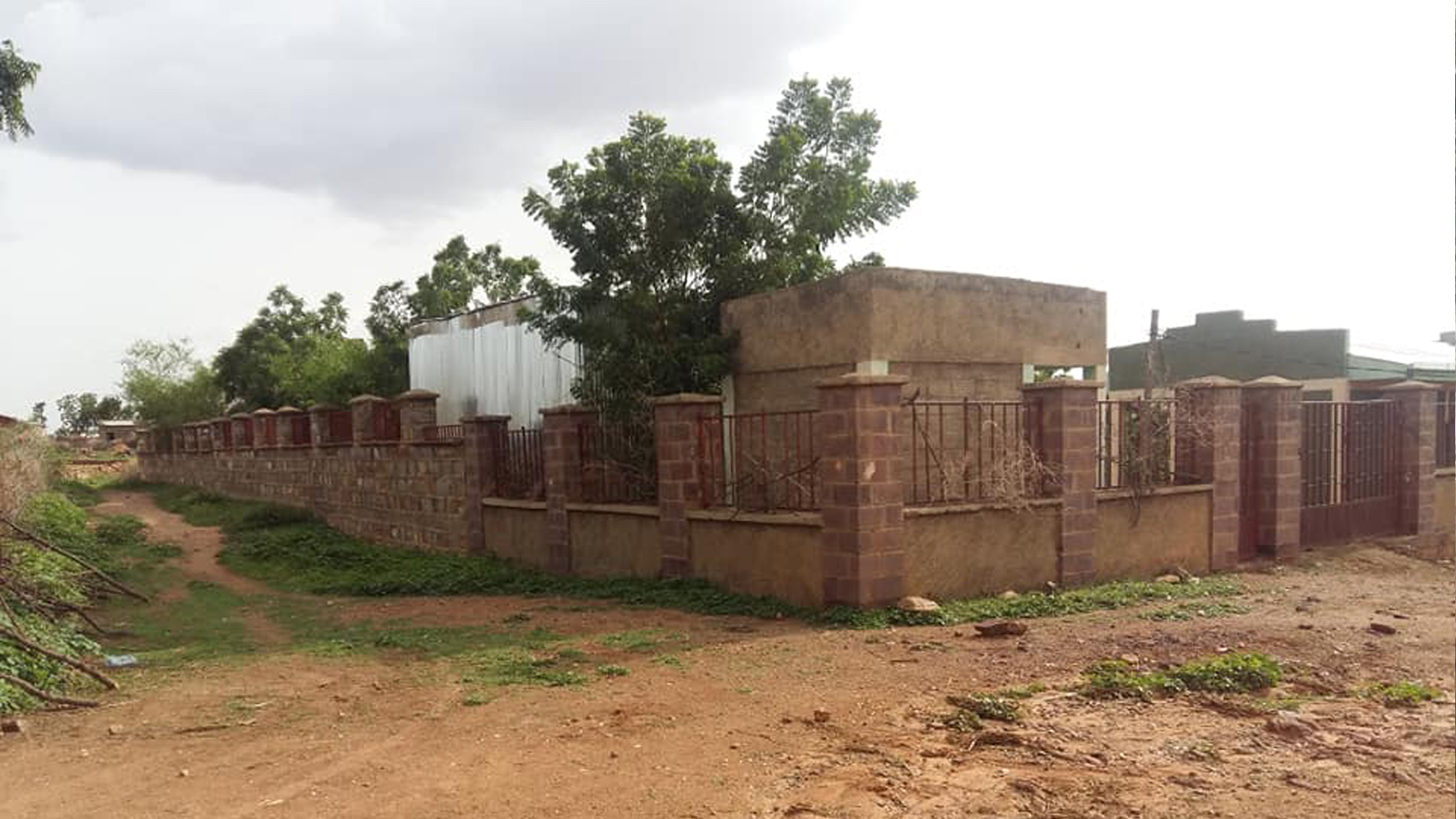
Kunama Ethnographic Museum

